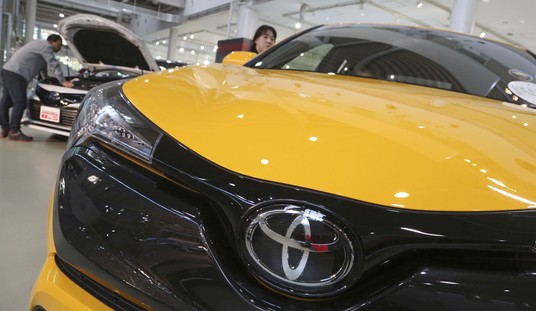You've had the experience of walking along and negotiating around someone who is walking slowly, weaving or bumping into other pedestrians for an obvious reason: He or she is talking on a cell phone, listening to an iPod or texting on a Blackberry.
And you've had the natural, inevitable response to this annoyance: demanding a law to prevent it.
Oh, you haven't responded that way? Well, Carl Kruger has. The state senator from Brooklyn, N.Y., wants to make it illegal to use an electronic device while crossing a big-city street on foot. He has an ally in Arkansas state Sen. Jimmy Jeffress, who wants to ban pedestrians from wearing headphones in both ears on or near a roadway.
These measures reflect a reflexive urge to regulate even the smallest elements of human behavior, from the flavorings in cigarettes to the type of fats in restaurant meals to the number of bullets a magazine may hold. Some people apparently sit around thinking, "What's the good of having all this government power if we're not going to use it?"
The urge is at its strongest when stimulated by a belief that the behavior is not only irksome but dangerous. The rationale in this case comes from a recent increase in pedestrian fatalities, as reported by the Governors Highway Safety Association (GHSA).
Recommended
After falling for four straight years, the number rose in the first half of 2010. One theory is that many pedestrians are too distracted by their electronic habits to notice that truck bearing down on them.
Or, as Kruger told The New York Times, "We're taught from knee-high to look in both directions, wait, listen and then cross. You can perform none of those functions if you are engaged in some kind of wired activity." Actually, you can perform all those functions and dance an Irish jig, even with text messages or rock music bombarding you.
GHSA spokesman Jonathan Adkins says electronic distractions are a conceivable explanation for the increase, but there is no way to be sure. It's also premature to assume the trend is more than a passing blip. "You don't want to overreact to six months of data," he told me. "We like to have two or three years of data before we recommend significant action."
If cell phones and media gadgets were spawning an epidemic of pedestrian carnage, you'd think it would have erupted before now. Both have been in widespread use for years, and yet pedestrian deaths have declined.
It's easy to imagine other reasons for the recent spike. Unemployment was very high in 2010, and those who are out of work may walk more, to save gas and money. Maybe public transit cuts have forced some riders to take the shoe leather express. Maybe being unemployed makes you more likely to drown your sorrows and stagger into the path of a bus.
Human beings do not always respond to new technologies in predictable ways. It's possible that listening to music or sending messages makes pedestrians less aware of the dangers around them. Or possibly it discourages them from jaywalking or crossing against the light, in unconscious self-preservation.
Laws don't always work as intended. It may sound only prudent to prohibit drivers from text-messaging. But a recent study by the Highway Loss Data Institute (HLDA) found that in three of four states that imposed such bans, auto crashes increased.
Why? The HLDA says some motorists could be holding their phones down, out of sight of police, to do their texting, "taking drivers' eyes further from the road and for a longer time."
But even if gadgets are indeed luring pedestrians toward premature death, a ban would be an enforcement nightmare. How does a cop know if your music device is on or off when you hit the crosswalk? Or if you are talking to someone on your Bluetooth, rather than soliloquizing?
How many cops are going to make a priority of collaring ambulatory electronic addicts? Chicago forbids drivers from talking on hand-held cell phones, and Chicago streets are clogged with drivers talking on hand-held cell phones.
Unfortunately, some people with power lack judgment about its proper limits. Making laws is a bit like being a pedestrian: It's important to know when to go, but also when to stop.


